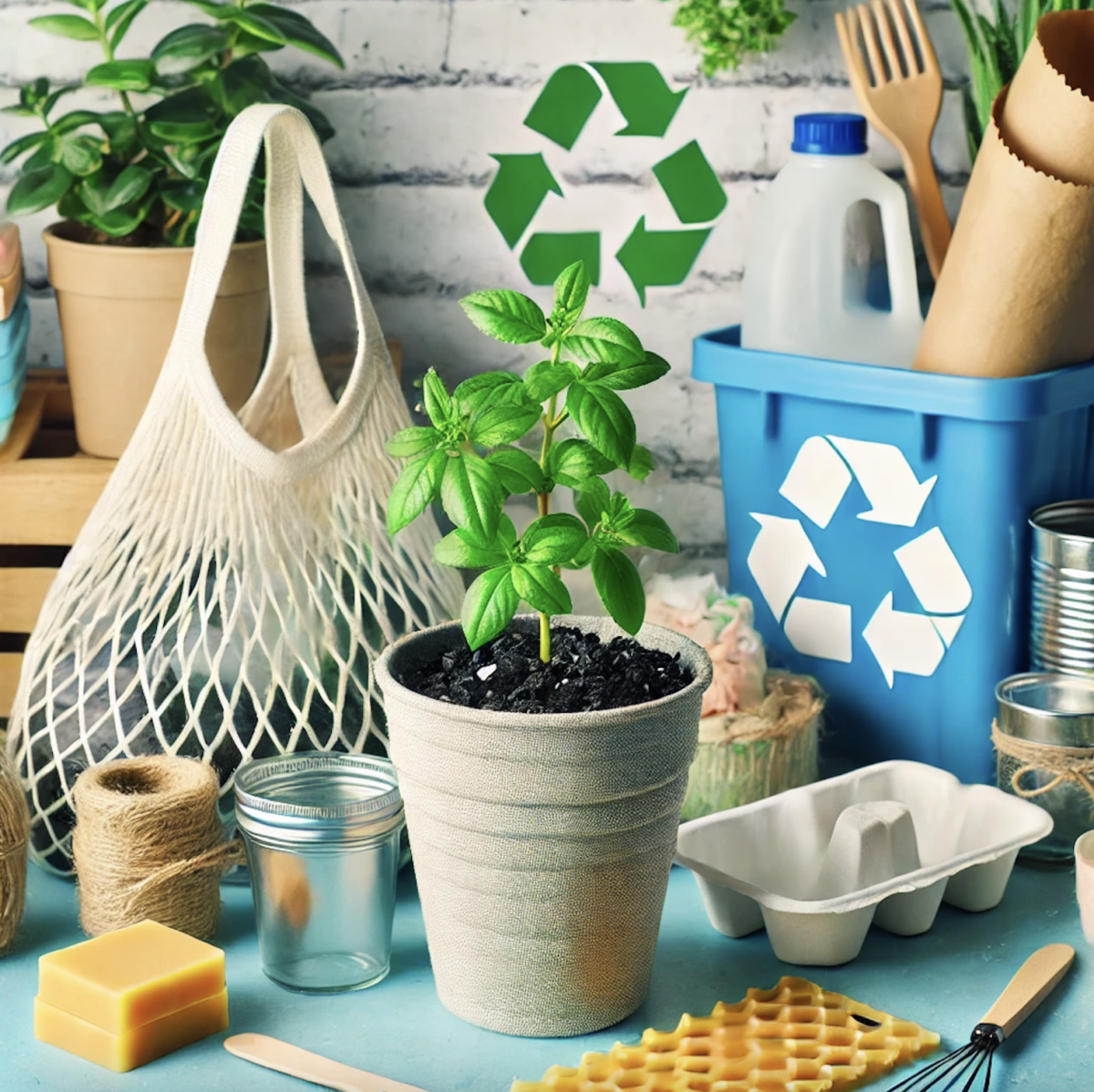We all know that plastic is everywhere — from packaging to single-use items — but it doesn’t have to end up in a landfill after just one use. With a little creativity, we can extend the life of plastic items and even reduce the amount of plastic we consume in the first place. Here are some fun, practical, and impactful ways to cut down on plastic use and help protect the environment.
1. Repurpose Plastic Containers
Before you toss out that empty yogurt tub or plastic jar, think about how it could be repurposed. Plastic containers can be reused in countless ways around the house:
- Planters for indoor plants: Give your plants a new home by using plastic containers as pots. Just poke a few holes at the bottom for drainage, and you’re set!
- Organizers: Use old plastic containers to organize small items like screws, office supplies, or craft materials.
- Leftover storage: Instead of buying more plastic, repurpose what you already have to store leftovers or even freeze soups and sauces.
2. Invest in Reusable Alternatives
One of the best ways to reduce plastic consumption is to avoid it altogether. Investing in reusable alternatives can save hundreds of plastic items from going to waste every year:
- Beeswax wraps: These sustainable wraps are a great alternative to plastic wrap for covering food. They’re washable, reusable, and compostable.
- Reusable silicone lids: Instead of using plastic wrap, silicone lids can stretch to fit over bowls, dishes, and even fruits and vegetables.
- Glass jars: Perfect for storing pantry staples or taking snacks on the go, glass jars are sturdy and plastic-free.
3. Rethink Your Shopping Habits
Your shopping choices can have a huge impact on how much plastic you bring home. Here are some easy tips to help you cut down:
- Bring your own bags: Keep a few reusable shopping bags in your car or by the front door so you’ll never forget them on your next grocery trip.
- Shop in bulk: Buying in bulk often means less plastic packaging. Bring your own containers to refill items like grains, nuts, and spices.
- Choose sustainable brands: More and more companies are focusing on reducing plastic in their packaging. Look for brands that use eco-friendly materials or offer refillable options.
4. Properly Recycle What You Can’t Reuse
Despite our best efforts, some plastic is unavoidable. The key here is to ensure that it’s properly recycled:
- Check local recycling rules: Recycling requirements vary by location, so make sure you know what can and cannot be recycled in your area.
- Sort your plastics: Clean and separate your plastics before placing them in the recycling bin. Dirty plastics can contaminate an entire batch, leading to more waste.
- Encourage others: Share your knowledge about proper recycling practices with friends and family to increase recycling rates in your community.
5. Get Creative with DIY Projects
There’s no limit to how creative you can get when repurposing plastic items:
- Create fun DIY toys: Turn plastic bottles into planters, bird feeders, or even toy rockets for kids.
- Make storage solutions: Cut plastic bottles in half and use them as drawer dividers or desk organizers.
By thinking beyond the bin, you can drastically cut down on your plastic use and find new, sustainable ways to manage what you already have. For more tips, check out our guide on “How to Reduce Plastic Use in Your Everyday Life.”
These simple changes may seem small, but they make a significant impact. Together, we can create a world where plastic is used wisely and disposed of responsibly. Every little step counts when it comes to building a sustainable future.
Ready to take action? Join our community and download the 2030 or Bust app to see how you can get involved in the global movement to reduce waste and protect our planet.

